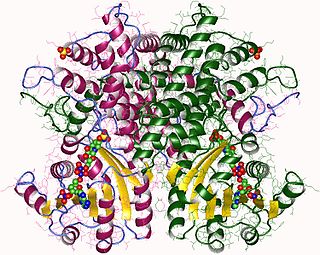| 2-oxopropyl-CoM reductase (carboxylating) | |||||||||
|---|---|---|---|---|---|---|---|---|---|
| Identifiers | |||||||||
| EC no. | 1.8.1.5 | ||||||||
| Databases | |||||||||
| IntEnz | IntEnz view | ||||||||
| BRENDA | BRENDA entry | ||||||||
| ExPASy | NiceZyme view | ||||||||
| KEGG | KEGG entry | ||||||||
| MetaCyc | metabolic pathway | ||||||||
| PRIAM | profile | ||||||||
| PDB structures | RCSB PDB PDBe PDBsum | ||||||||
| Gene Ontology | AmiGO / QuickGO | ||||||||
| |||||||||
In enzymology, a 2-oxopropyl-CoM reductase (carboxylating) (EC 1.8.1.5) is an enzyme that catalyzes the chemical reaction
- 2-mercaptoethanesulfonate + acetoacetate + NADP+ 2-(2-oxopropylthio)ethanesulfonate + CO2 + NADPH
The 3 substrates of this enzyme are 2-mercaptoethanesulfonate, acetoacetate, and NADP+, whereas its 3 products are 2-(2-oxopropylthio)ethanesulfonate, CO2, and NADPH.
This enzyme belongs to the family of oxidoreductases, specifically those acting on a sulfur group of donors with NAD+ or NADP+ as acceptor. The systematic name of this enzyme class is 2-mercaptoethanesulfonate, acetoacetate:NADP+ oxidoreductase (decarboxylating). Other names in common use include NADPH:2-(2-ketopropylthio)ethanesulfonate, oxidoreductase/carboxylase, and NADPH:2-ketopropyl-coenzyme M oxidoreductase/carboxylase.







